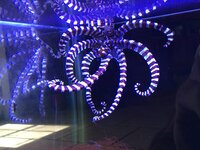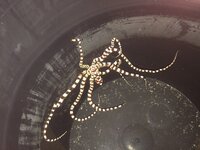Just got in two Wunderpus. I have one in a 75 and the other I'm still putting a tank together for so is in a holding tank for now. They are both females so hopefully one or both will lay viable eggs so I can do some larval rearing trials.
So far they are doing good and both are already eating frozen shrimp.
So far they are doing good and both are already eating frozen shrimp.


